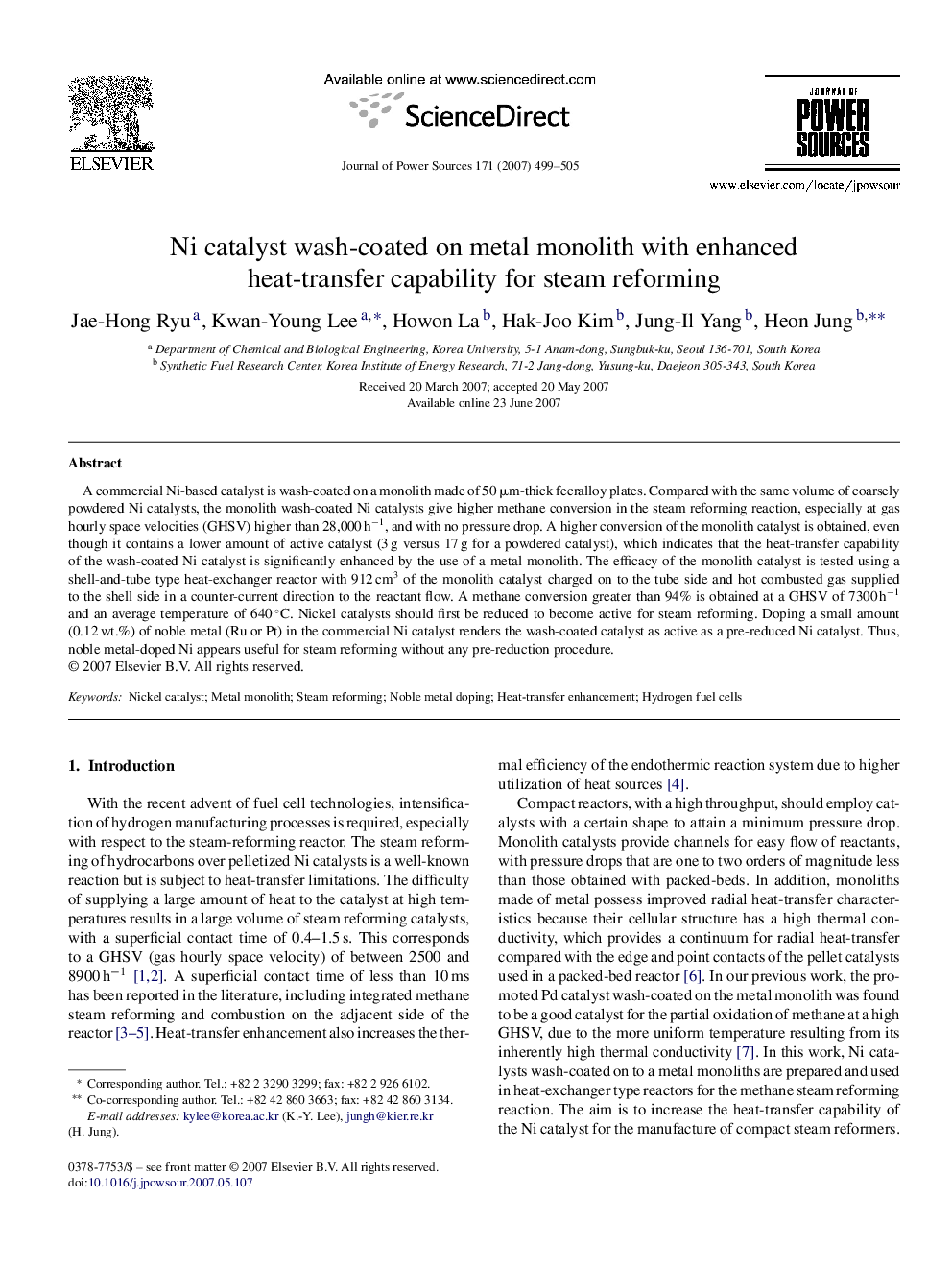| Article ID | Journal | Published Year | Pages | File Type |
|---|---|---|---|---|
| 1286359 | Journal of Power Sources | 2007 | 7 Pages |
A commercial Ni-based catalyst is wash-coated on a monolith made of 50 μm-thick fecralloy plates. Compared with the same volume of coarsely powdered Ni catalysts, the monolith wash-coated Ni catalysts give higher methane conversion in the steam reforming reaction, especially at gas hourly space velocities (GHSV) higher than 28,000 h−1, and with no pressure drop. A higher conversion of the monolith catalyst is obtained, even though it contains a lower amount of active catalyst (3 g versus 17 g for a powdered catalyst), which indicates that the heat-transfer capability of the wash-coated Ni catalyst is significantly enhanced by the use of a metal monolith. The efficacy of the monolith catalyst is tested using a shell-and-tube type heat-exchanger reactor with 912 cm3 of the monolith catalyst charged on to the tube side and hot combusted gas supplied to the shell side in a counter-current direction to the reactant flow. A methane conversion greater than 94% is obtained at a GHSV of 7300 h−1 and an average temperature of 640 °C. Nickel catalysts should first be reduced to become active for steam reforming. Doping a small amount (0.12 wt.%) of noble metal (Ru or Pt) in the commercial Ni catalyst renders the wash-coated catalyst as active as a pre-reduced Ni catalyst. Thus, noble metal-doped Ni appears useful for steam reforming without any pre-reduction procedure.
